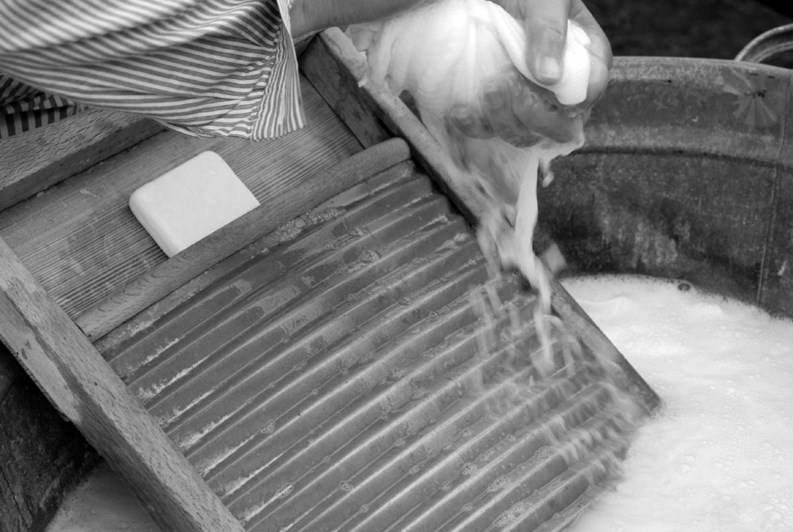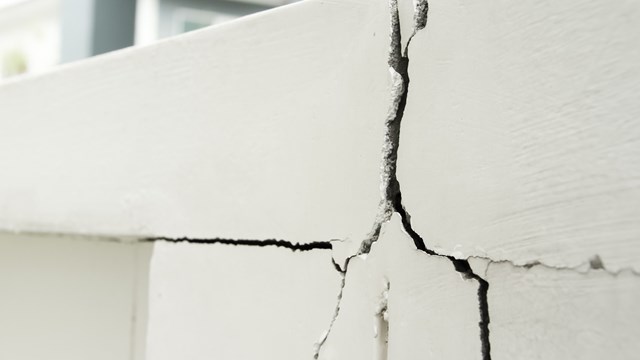Clean laundry. It’s one of those basic things without which we would go mad but which we rarely stop to consider. Within New York’s co-op and condo complexes, laundry room facilities are an integral part of a happy, functioning environment. Over the last decade, those facilities have evolved to suit changing needs and expectations from residents and managers alike. As a result, many laundry room service providers are offering new options that put them squarely at the forefront of customer service, both for individuals and the buildings as a whole.
Win-Win Relationship
But before launching into what’s new in the industry, it doesn’t hurt to take a look at how the whole building/service provider relationship works. Given that most laundry room contracts last from five to eight years, it’s not a stretch to use the “r” word when discussing the partnerships that arise. “It really does become a relationship,” says Denise Savino-Erichsen, one of the principals of Automatic Industries, a laundry service provider in Hempstead. “You do become pretty tight with these people.”
When co-op or condo buildings are in need of a laundry facility, the job is typically bid out to a contractor like any other building improvement project. The winning contractor will then take over the laundry room space, often refurbishing the area, providing furnishings and handling things like liability insurance. “For most managers or boards, they’d like one less thing to worry about,” Savino-Erichsen says. “And this is one corner of the building they shouldn’t have to worry about.”
The contracts between buildings and providers extends for so many years because of the initial cost of installing new machines, making those room enhancements and upgrading infrastructure. “It’s very costly to put these rooms together,” Savino-Erichsen says.
For the building, the laundry room can be a significant source of income given that the only real expense comes in the form of utilities. That income can come from the lease payments made by the service provider or through a profit-sharing agreement or a combination of the two.
While the rental arrangement is perhaps the most common, many buildings are now going directly to laundry contractors and simply purchasing their own machines, says Andrew Fisher, owner of Hi-Rise Laundry Equipment Corp. in Middle Village, Queens. The building then has the ability to decide how much they want to charge and can collect the fees directly. “The industry seems to be trending that way,” Fisher says. In addition to selling the machines, the laundry providers will then sign a service agreement with the building, ensuring an ongoing source of income beyond that initial purchase.
Beyond the usual central laundry room, some buildings are doing even more to meet their residents’ laundry needs, installing washers and dryers in individual apartments, or even putting separate laundry rooms on each floor.
Whatever the configuration or contract, the aim of both management and laundry service providers is to keep the customer happy. And that desire for increased customer service rests at the heart of many of the innovations transforming the business today.
A Coinless Revolution
In the past ten years or so, the biggest change in the laundry industry has been the ongoing transition away from coin-operated machines to swipe-card systems. No more digging in the couch cushions for quarters every Sunday; now residents can simply insert a bill into a machine in the laundry room itself and have credits put on their swipe card. Other systems allow people to directly use their credit cards while still others offer people the opportunity to add credits from the comfort of their home computer.
This transition has been motivated by a number of factors. Convenience for the customer, obviously, was at the forefront. “You want to try to make the process as convenient as possible so they don’t leave the building [to do their washing],” says Fisher.
“My personal vision is that we’ll be a coinless company by the end of 2010,” says Ron Garfunkel, owner of Service Directions, Inc. in Pelham, New York. “We’re 90 percent there right now.” In fact, one of his firm’s online services, Cyberserve, allows residents to choose a monthly laundry plan and pre-pay it along with their rent or by credit card.
For many laundry providers, moving away from coins mean they can repurpose staff and resources. Rather than sending employees out to collect coins, says Garfunkel, “We can now have a greater presence serving machines” and taking care of customers. Going coinless also works toward eliminating security problems for staff. Less cash on hand means less potential for theft or robbery. “If we eliminate cash, we’ve eliminated a safety issue,” he adds.
Additionally, the industry has moved away from coins in response to consumer demands. “Ninety percent of the people still using coins cannot wait for the introduction of the card,” says Savino-Erichsen. In some cases, though, there’s a reluctance or hesitation on the part of older residents when it comes to embracing coinless technology. That’s why Savino-Erichsen’s firm offers orientation sessions for seniors, helping them make the transition away from quarters and better understand the system without fear. “It’s rewarding to go back and see how happy they are with the system,” Savino-Erichsen says. “They feel like it’s something they’ve mastered.”
Reaching Out to the Customer
A decade ago, educational laundry room seminars for residents might have seemed far-fetched. In fact, that kind of outreach and desire to establish a direct connection to the customer is very much a part of today’s business model for laundry service providers. “In the past, our relationship was always with the landlord,” says Garfunkel. “Now we’re trying to get closer to the consumer.”
That’s one of the ideas behind the online presence of a company such as Service Directions, Inc., whose Cyberwatch system allows residents to log on to a secure website and “see” their laundry rooms through virtual online depictions; a machine in use, for example, will show up as a little vibrating washing machine or dryer icon. This means people can find out when washers or dryers are free without having to make the trek downstairs hauling an overflowing laundry basket with them. They also can request to have text messages or e-mails sent to them when their own laundry is finished.
More firms are making sure they are accessible to customers as well, ensuring actual live people answer phone calls and tackle problems. “We try to create a service where people can talk to us,” says Savino-Erichsen. “Just because we’re in a big city, that doesn’t mean you can’t have old-fashioned service.”
Garfunkel agrees. “We answer our phones live because A, when you listen to a consumer directly, you have a better chance of finding out exactly what the problem is and B, you can immediately appease them.” Combine that immediate response with the online card system, for example, means that customer service reps can refund lost dollars and cents immediately and without fuss. In the past, if someone called to complain about a machine eating a dollar’s worth of quarters, they would have to wait for an actual check in the mail. The combination of live customer service and online access greatly reduces those types of hassles.
Better for the Environment
As with so many industries these days, laundry providers have made significant steps toward green technologies and practices. “If everybody does a little something, if every business makes that statement and says they’re going to go green and then does something about it, it’ll make a difference,” says Garfunkel. To that end, companies are offering machines that use less water and less energy. That’s a plus not only for the environment but also for the buildings who pay the utility bills on the laundry facilities. “Buildings are going after the (state and local) tax credits they can get by lowering their BTUs,” Garfunkel says. “And they’re lowering their water costs.”
Says Savino-Erichsen, “The energy efficiency of the machines has increased. New York State guidelines will move the industry away from top-load to more energy-efficient, water-saving machines.” Best of all, it’s a change about which consumers as well as building managers can feel good.
Today’s laundry business is changing rapidly, incorporating new technologies and philosophies into a business that’s been around for as long as there have been machines to wash clothes. These days, with people crunched for time, it’s more important than ever to try and meet those needs, says Garfunkel. “In the past, laundry could be a social thing,” he says. “Neighbors would go to the laundry together and talk with each other. People had time. People today don’t have that time.”
In the future, more innovations such as key chain swipe cards or card fill-ups by phone may make the process of getting clean even easier. And environmental demands will ensure machines become greener. One thing is certain, customers are standing front and center in the laundry industry. That’s even better news than never having to search for quarters again.
Liz Lent is a freelance writer, teacher, and author and a frequent contributor to The Cooperator.







Comments
Leave a Comment